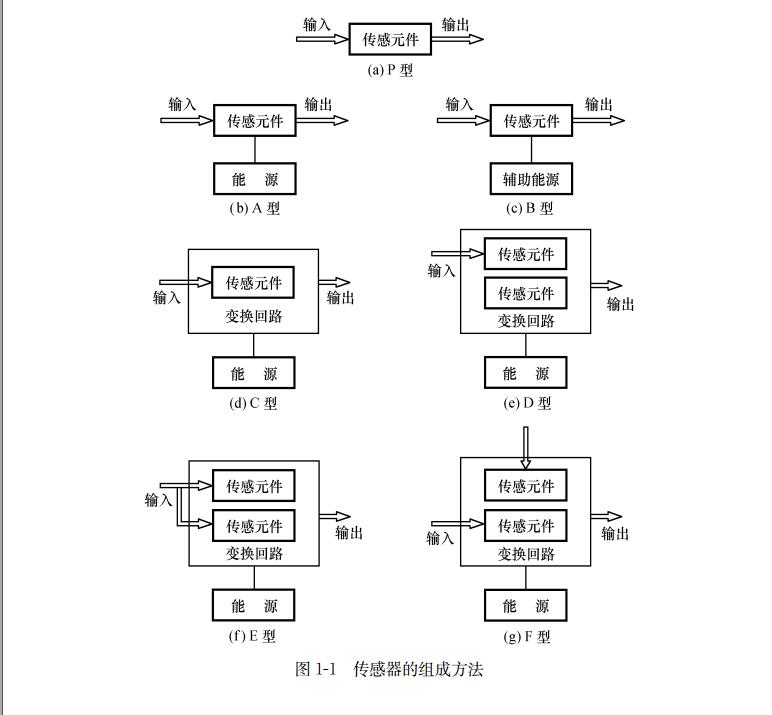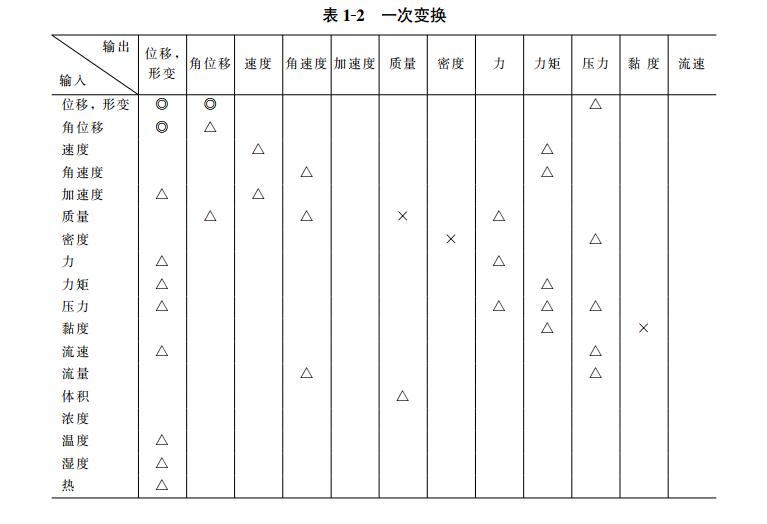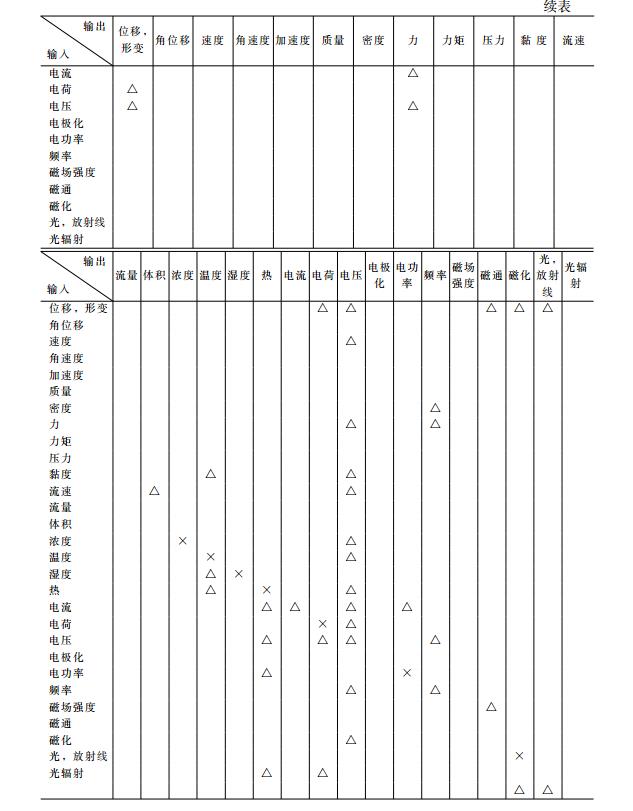push time:2023-06-26 Popularity: source:1
The HBM sensor converts different physical, chemical, and biological quantities from the outside into easily processed electrical quantities and outputs them. There are various forms of HBM sensors, including passive transformations that do not require the addition of energy in the transformation and active transformations that require the addition of energy. The basic forms are shown in Figure 1-1 and are divided into seven types. Figure 1-1 (a) is the most basic form of sensor composition, which is the simplest form with only sensing elements. This form is called P-type, such as thermocouples that can directly convert the measured heat source into electricity, and piezoelectric elements that can convert pressure into electricity. Figure 1-1 (b) shows the use of a power source such as a power source to excite the sensor and obtain an output signal. This form is called an A-type sensor, such as an electret in a microphone that can convert sound into electricity, and a differential transformer that can convert displacement into electricity. Both require power excitation. Sometimes a magnet is used as an auxiliary energy source, and this type of sensor is called a B-type sensor Figure 1-1 (c), such as a magnetoelectric speed sensor. In Figure 1-1 (d), the sensing element changes its impedance characteristics with the input signal. Without modification, the output signal cannot be obtained. It is necessary to design a transformation circuit including the sensing element and increase the power source to obtain the output signal. This form is called a C-type HBM sensor. For temperature measurement with a thermistor, the thermistor needs to be designed as a bridge detection circuit.

In most cases, the characteristics of HBM sensors are influenced by the surrounding environment, and when these effects cannot be ignored, measures must be taken to eliminate them. Figures 1-1 (e), (f), and (g) are some effective composition methods. In Figure 1-1 (e), two sensing elements with identical principles and characteristics are used, one receiving an input signal and the other not receiving an input signal. The changes in environmental characteristics of the two sensing elements are different. The purpose of creating a sensing element is to counteract the influence of environmental conditions on the sensing element receiving the input signal. This form is called a D-type sensor and mostly requires a power source. For a surface acoustic wave (SAW) sensor with dual delay lines, the characteristics of the two delay lines are exactly the same. One is used as the sensor receiving the measurement, and the other is used as compensation for the temperature environment, thereby eliminating the temperature influence in the measurement. In Figure 1-1 (f), both input signals are added to two sensors with identical principles and characteristics. In the transformation loop, the parameters of the sensing element are inverted to transform the input signal and in phase to compensate for changes in environmental conditions, thereby increasing the measurement sensitivity. This form is called an E-type sensor, such as a strain full bridge circuit for measuring force and strain. In Figure 1-1 (g), two sensing elements are also used. An input signal is added to one of the sensing elements and the influence of environmental conditions on it is understood in advance. A compensation signal that can counteract the influence of the environment on the other sensing element is added, which is called an F-type HBM sensor. For example, a thermistor temperature measuring element is used in the pH electrode to compensate for the temperature effect in pH measurement. In addition, there are some hybrid types, such as sensors made using the Hall effect, which have internal power sources and auxiliary sources, and can be seen as a mixture of B-type and A-type or B-type and C-type.
In most cases, the output of the sensor is electrical quantity, but it is not easy to directly convert some external information into electrical quantity. It is often necessary to adopt two or more levels of changes, which increases the degree of freedom involved in the sensor to adapt to various conditions. The quantities that are easily converted into electricity include displacement, light, heat (temperature), etc. Due to the wide range of applications of displacement measurement, various studies have been conducted on displacement sensors, including contact and non-contact ones. Optoelectronic devices and thermocouples are also relatively mature, so they are often used as intermediate conversion variables. Table 1-1 lists the physical quantities that can be measured using sensors such as displacement, light, and heat.

In fact, sensors composed of only one sensing element are rare, usually combining sensing elements with different performance to form HBM sensors. In addition, there are many types of measurements and various measurement conditions, so some of them cannot be directly detected using existing sensing elements, or although they can be detected, actual detection is relatively difficult due to economic conditions or other reasons. Therefore, in most cases, the method adopted is to first transform the measured quantity into other physical quantities, and then select a sensing element that can transform this physical quantity for further transformation. For example, pressure sensors, although they have piezoelectric components that can directly convert pressure into voltage signals, due to limited insulation resistance, charge amplifiers must be used when measuring slow changes in pressure at or near steady states. However, charge amplifiers have issues such as operational stability and signal-to-noise ratio, making the transformation more difficult. Elastic diaphragms are often used to first convert pressure into diaphragm displacement, and then use displacement sensing elements to obtain output signals. This means that pressure measurement is carried out through two-stage transformations from pressure to elastic displacement and then to electrical quantity. In a broad sense, elastic diaphragms are also a sensing element. This intermediate transformation element is called a primary transformation element.
In order to understand the performance of a transformation element, a more convenient method is to classify the quantity that may undergo transformation, the quantity that can be output by the transformation element, and the quantity that cannot be output by the transformation element. Table 1-2 is an example of this classification method. In Tables 1-2, various measurements are listed in order vertically and horizontally, with the intersection of the two quantities represented by matrix elements ij. If quantity i can be transformed into quantity j, then use& Ldquo; △& Rdquo; To represent; Most transformation elements can be used for transformation; Ldquo; ◎& Rdquo; To represent; In principle, it is impossible to perform transformations; Ldquo& Amp; Times& Amp; Rdquo; To represent; Although transformation is possible, the transformation element that has not yet been developed is represented by a blank space.


If you want to measure a certain quantity i and obtain j as the output, first find the position of i j in this table. If there is& Ldquo; ◎& Rdquo; Or& Ldquo; △& Rdquo; Mark, then the transformation method can be specifically studied. If this method is suitable for the required measurement range, measurement accuracy, and various other requirements, then this transformation method can be used. Looking for& Ldquo; ◎& Rdquo; Or& Ldquo; △& Rdquo; After marking the location, make a transformation of the corresponding quantity at that location. Assuming the combination at this point is ij, then take quantity j as input and specifically investigate whether quantity j can be transformed into quantity j. If the location of j j has& Ldquo; ◎& Rdquo; Or& Ldquo; △& Rdquo; Mark, then we can explore whether we can use i& Flash; J& Flash; The transformation combination of j. The degree of freedom required for the transition from i to j is not necessarily limited to one, so the most suitable method can be selected according to different situations and application purposes.
I& Flash; This combination represents components that are enlarged, reduced, or amplified. Enlargement and reduction are passive, while amplification is active. Therefore, according to different situations, this combination is not necessarily a simple component but a complex structure. Although Table 1-2 does not specify the transformation method, it is still beneficial as a consideration for constructing sensors. Tables 1-2 also reflect that there are still many gaps in the field of sensors, which urgently require us to research and develop.
★German HBM: Load cells - Series Z6F, C16I, C16A, RTN, HLCB1, PW2D, PW6D, PW2C, PW6K, PW6C, PW10A, PW12C, PW16A, PW22, S40A, C2, etc
★ German HBM: Torque/force sensors - T40B, T22, T5, U9C, C9C, S9M, U2B, S2M, and other series
★ German HBMWeighing instruments/transmitters - WE2111, RM4220, BM40, AE101, AE301, EM201 and other series
★ American CeltronSensors - STC, HBB, LPS, LOC, PSD, LCD, MBB, SQB, and other series
★ Tedea huntleigh: --341061635510151040102212601201241240 and other series
★ American TranscellSensors - BSS, BSH, DBSL, SBST, CR, SBS, BAB, and other series
★ Mettler Toledo: Load cells - TSC, TSB, MTB, GD, SLB415, SLB215, MT1022, MT1260, MT1241, SB, SBS, SBH and other series
★ METTLER TOLEDO: Digital Sensor& Flash; GDD, SLC7200760, PDX, SLC820 and other series
★ Mettler Toledo: Control instruments - IND331, IND245, IND320L, IND230, IND560, B520, IND110, WM0800, AJB and other series
Contact person: Huang Hao Tel: 18688492451 (WeChat with same phone number)
Sales hotline:
Miss Chen: 18520271262
Miss Xie: 18688494254
Mr. Huang: 18688492451
Working hours:
Monday to Saturday9:0018:00
